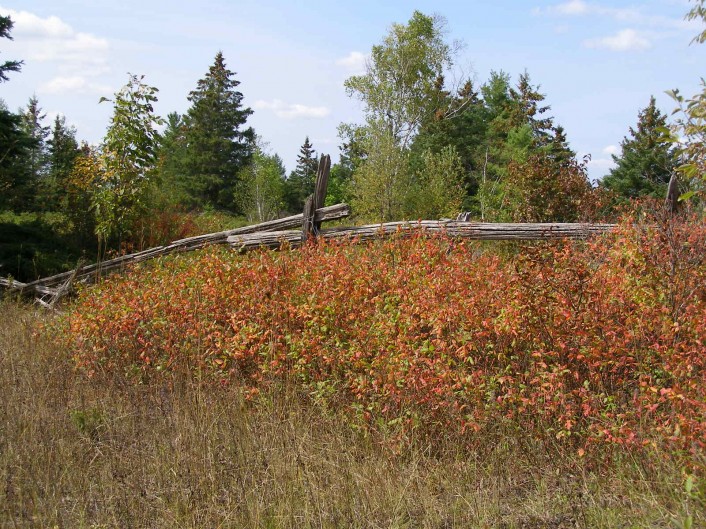As Thanksgiving weekend approaches, the crimson forests of fall are reaching their peak. But it is not just the lofty maples that draw the attention of sight-seers in this season; shrubs in the sumac family also put on quite a show.
Most of us are familiar with staghorn sumac, a native shrub that thrives in waste places and along forest edges. Its coarse compound leaves can stretch up to two feet long, with up to 30 serrated leaflets arrayed along each central stalk. These leaves turn brilliant scarlet in early fall, their impact intensified by staghorn sumac’s habit of growing in large clumps.
On the Carden Alvar, a different form of sumac takes over where the thin soils over limestone bedrock create more difficult growing conditions. Fragrant sumac, as its name suggests, releases a pleasant citrus-like aroma when its young leaves are crushed. This species turns red in the autumn as well, but a somewhat softer, rosier shade than its staghorn cousin.
When you first encounter fragrant sumac, its toothed leaves of three are likely to set off warning bells about poison ivy. You would not be far off, for the sumacs fall within the same family as poison ivy and poison oak, but fortunately do not share the same allergic properties. Fragrant sumac leaves don’t have the same glossy leaf surface as poison ivy, and they usually grow in the form of a low mounded shrub up to four feet tall in the middle. At this time of year, while poison ivy is forming its small gold-coloured berries, fragrant sumac has clusters of fuzzy red berries. These berries form only on female plants, which start off the spring season with small yellow flowers, well before the first leaves emerge.
Over the past decade, fragrant sumac has been increasingly adopted by the landscape industry as an ideal shrub for urban settings. On well-drained sites, it forms an attractive ground cover. Its spread is easier to control than staghorn sumac, which can pop up new stems from its long roots in all sorts of places. Best of all, fragrant sumac draws from a heritage of dry rocky habitats, so it is tough as an old boot once established. That toughness makes it a great choice for spots where poor soil and lack of regular watering would spell doom for many other landscape plants.
One way to see fragrant sumac is to watch for it in plant nurseries or recently landscaped settings. The service centres along Highway 400, for example, have used fragrant sumac as part of their landscaping. A far better way, of course, is to observe this plant in its native setting, especially in places like the Carden alvar where it grows in abundance. A fall drive along Wylie Road, not far north of the Kirkfield lift locks, will reveal clumps of fragrant sumac along the roadside.
For those of you who prefer to combine your plant-watching with a little exercise, visit the Carden Plain page on our website to access a copy of a brochure showing walking trails in this area.
Written by Ron Reid, Carden Program Coordinator.

